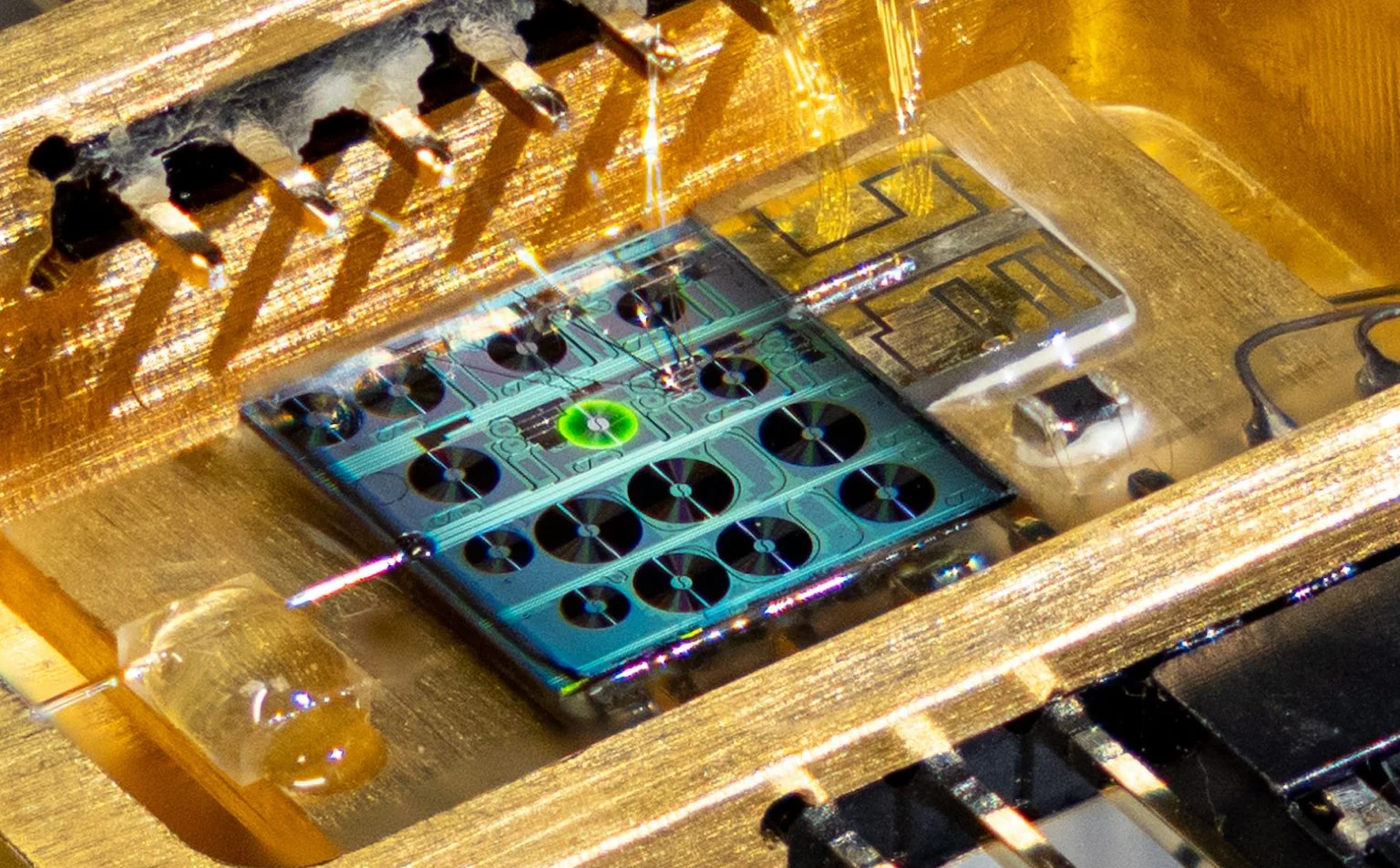"Optical image of a fully-packaged hybrid integrated erbium-laser based on silicon nitride photonic integrated circuit, providing fiber-laser coherence and previously unachievable frequency tunability. Credit: Andrea Bancora and Yang Liu (EPFL)" (ScitechDaily, Sharper, Smaller, Smarter: Scientists Develop Groundbreaking Miniature Fiber Laser)
The new lasers revolutionize photonic technology. The new miniature fiber laser is smarter, smaller, and sharper than any other laser system. This ability makes it possible to adjust the energy levels of other atoms or conduct energy with very high accuracy into photons. That is trapped in the frames. The high-accurate lasers can adjust the qubit's energy levels. Or the system can minimize the waste heat. This is very important for photonic microchips. Temperature can make those processors oscillate. And that destroys the photonic channels where information travels in those systems.
"Researchers have developed a new intelligent photonic sensing-computing chip that can process, transmit and reconstruct images of a scene within nanoseconds. Credit: Wei Wu, Tsinghua University" (ScitechDaily, Ultrafast Photonic Chip Transforms Machine Vision and Edge Intelligence)
The new ultra-fast photonic chip can transform data that travels into it. Into images. That it can be resend to computers. This kind of photonic chip can be a great advance for CCD imaging technology. The system can also revolutionize edge intelligence, the system that preprocesses data before it sends it to the CPU.
Otherways this kind of system can also used as a room-temperature qubit. In that kind of quantum system the number of quantum points, that photons stress can determine the state of the qubit. So in this kind of system, the CCD chip can turn into the qubit.
"Researchers have demonstrated that a specific class of oxide membranes can confine infrared light much more effectively than bulk crystals, which has promising implications for next-generation infrared imaging technologies. These thin-film membranes maintain the desired infrared frequency while compressing wavelengths, allowing for greater image resolution."(ScitechDaily, “Previously Only Theorized” – Researchers Demonstrate New Way To “Squeeze” Infrared Light)
"Using transition metal perovskite materials and advanced synchrotron near-field spectroscopy, the researchers showed that phonon polaritons in these membranes can confine infrared light to just 10% of its wavelength. This breakthrough could lead to new applications in photonics, sensors, and thermal management, with potential ease of integration into various devices. Credit: Yin Liu, NC State University" (ScitechDaily, “Previously Only Theorized” – Researchers Demonstrate New Way To “Squeeze” Infrared Light)
But the other thing is that modern systems can use phonons to adjust wavelength into another. The ability to transform IR radiation into some other wavelength can protect information. But in theory, phonons can transfer any radiation to another wave movement.
And that means that maybe someday some kind of phonon can transform X- or gamma-rays into gravity waves. In those cases, information can use another wavelength when it travels between points A and B. Then it can transform wavelength when information travels from point B to point C.
Super photons or very high energy photons can be the next-generation tools for many quantum equipment. The super photon can be put into superposition and entanglement with very low-energy photons.
"Artist’s view of a photonic Bose-Einstein condensate (yellow) in a bath of dye molecules (red) that has been perturbated by an external light source (white flash). Credit: A. Erglis/Albert-Ludwigs University of Freiburg" (ScitechDaily, Quantum Magic: How “Super Photons” Are Shaping the Future of Physics)
Super photons can act as quantum scanners that scan layers and surfaces. When energy impacts one layer, it pushes the photon away. When the energy level on the layer decreases, it pulls the photon to the layer. And that transforms the photon into the quantum yoyo that can scan the smallest particles in the universe.
Those very high-energy photons can adjust to the wavelength that minimizes energy transfer into it's environment. The super photons can be in the Bose-Einstein condensate. In that almost stable environment, photons can hover above the layer without the ability to transfer energy to those layers.
https://scitechdaily.com/previously-only-theorized-researchers-demonstrate-new-way-to-squeeze-infrared-light/
https://scitechdaily.com/quantum-magic-how-super-photons-are-shaping-the-future-of-physics/
https://scitechdaily.com/sharper-smaller-smarter-scientists-develop-groundbreaking-miniature-fiber-laser/
https://scitechdaily.com/ultrafast-photonic-chip-transforms-machine-vision-and-edge-intelligence/
https://en.wikipedia.org/wiki/Bose%E2%80%93Einstein_condensate
https://en.wikipedia.org/wiki/Phonon




Comments
Post a Comment